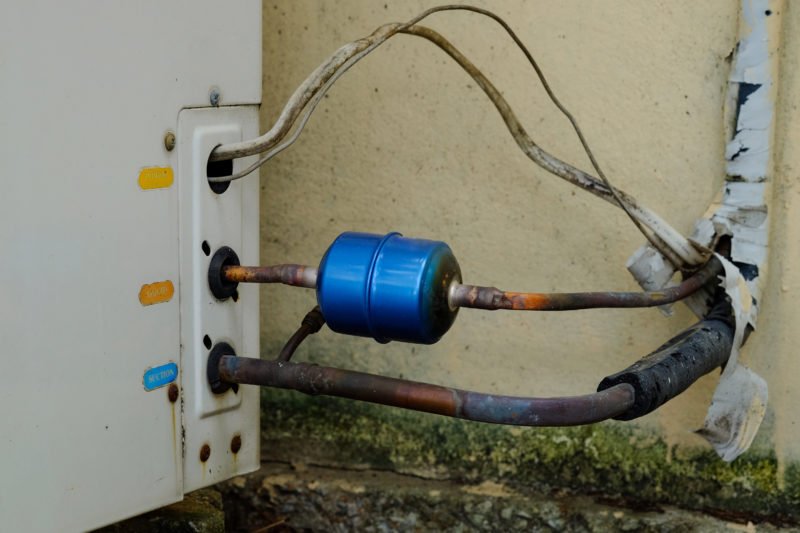Managing a Frozen AC Pipe: Successful Strategies
Managing a Frozen AC Pipe: Successful Strategies
Blog Article
We've found this great article pertaining to Air Conditioner Frozen? How To Fix your Frozen AC Line below on the web and believe it made sense to write about it with you on my blog.

Intro
Finding that your air conditioner pipeline is frozen can be concerning, especially throughout warm summer season when you depend on your a/c one of the most. Comprehending what to do in such a situation is critical to stop additional damage to your air conditioning system and ensure your convenience inside.
Understanding the Causes
Numerous variables can contribute to the freezing of an air conditioner pipeline. Comprehending these causes can aid you attend to the issue successfully.
Lack of Airflow
One common root cause of an icy AC pipe is inadequate air flow. When the air movement over the evaporator coil is limited, it can cause the coil to drop below freezing temperature, causing ice development on the pipeline.
Reduced Refrigerant Levels
Not enough cooling agent degrees in your air conditioner system can additionally cause an icy pipeline. Reduced refrigerant levels can cause the stress in the system to go down, bring about the cold of wetness on the evaporator coil.
Winter Conditions
In cooler environments, freezing temperatures outside can add to the freezing of a/c pipes. If your air conditioning unit is not correctly insulated or if there are leaks in the ductwork, cool air can penetrate the system, triggering the pipeline to freeze.
Dirty Air Filters
Unclean or clogged up air filters can restrict air movement in your a/c system, resulting in numerous problems, including a frozen pipeline. It's important to change or cleanse your air filters on a regular basis to ensure correct airflow and avoid ice build-up.
Signs of a Frozen A/c Pipe
Identifying the signs of a frozen a/c pipeline is essential for prompt action.
Decreased Airflow
If you see a substantial decrease in air movement from your vents, it could suggest an icy pipeline.
Ice Buildup on the Pipe
Noticeable ice buildup on the refrigerant line or the evaporator coil is a clear indicator of an icy AC pipeline.
Weird Sounds from the Unit
Unusual sounds, such as hissing or bubbling, coming from your a/c system can indicate that there's ice existing on the pipe.
Immediate Actions to Take
When faced with a frozen AC pipeline, it's essential to act quickly to prevent more damages to your air conditioning system.
Switching off the air conditioner
The very first step is to switch off your ac system to prevent the system from running and aggravating the problem.
Checking for Blockages
Inspect the area around the interior device for any type of blockages that may be obstructing airflow, such as furnishings or curtains.
Thawing the Pipe
You can make use of gentle approaches like placing towels taken in warm water around the frozen pipeline to assist thaw it slowly.
Preventive Measures
Taking safety nets can assist stay clear of future events of a frozen air conditioner pipeline.
Regular Maintenance Checks
Arrange regular maintenance consult an expert HVAC specialist to guarantee that your a/c system is running effectively.
Changing Air Filters
On a regular basis replace or cleanse your air filters to stop air movement limitations and maintain optimal efficiency.
Insulating Exposed Pipes
If your a/c pipes are subjected to cold temperature levels, think about shielding them to avoid cold during winter season.
Looking For Professional Help
If DIY techniques fail to settle the problem or if you're unsure concerning how to continue, it's best to look for assistance from a qualified HVAC professional.
When DIY Methods Fail
If your attempts to thaw the pipeline or address other issues are unsuccessful, it's time to call in a specialist.
Value of Hiring a Professional HVAC Technician
A certified HVAC specialist has the experience and devices necessary to identify and fix problems with your AC system safely and successfully.
Conclusion
Managing a frozen AC pipe can be a frustrating experience, but understanding exactly how to react can aid minimize damage and recover comfort to your home. By comprehending the causes, acknowledging the indications, and taking timely action, you can effectively attend to the problem and protect against future incidents.
Frozen AC Line: Why It Happens & What To Do About It
A frozen AC line can be a rather peculiar sight in a place like Phoenix, Arizona where nothing ever freezes. In this post, we’ll discuss what makes an air conditioner line frozen – and what you can do about it.
Dirty Air Filters
Did you know that you should be cleaning or replacing your air filters on a monthly basis? Failing to do this can result in airflow issues that, in turn, cause your evaporator coils and lines to freeze over. You’ll notice a buildup of ice on both components, although the buildup on your pipes will, of course, be more evident unless you open your air condition up to reveal the coils.
What To Do About It
Give your air filter a good cleaning if it’s reusable. If not, replace the filter outright. Next, switch your air conditioner’s fan setting on and leave it there for 2-3 hours. This will draw warm air in, helping to thaw your evaporator coil. You can also check out this article for some tips on cleaning the coils themselves if you’d like to speed the process up. Before you switch the unit back to its normal state, make sure the supply vents are completely unobstructed and free of dust or other debris.
If you keep having this issue even after replacing your filters regularly, contact a local HVAC repair company and have them inspect your evaporator coil, ductwork, and any other components that may be at fault. If you live in the Phoenix, Arizona area, give American Home Water and Air a call.
Low Refrigerant Levels/Leakage
What To Do About It
Contrary to what air conditioner “recharge” companies often tell their clients about refrigerant, it should never need to be simply refilled. You see, refrigerant runs in what experts refer to as a “closed loop.” Refrigerant really shouldn’t be leaving that loop. If it is, you’ve got a leak.
Paying someone to come and pump more refrigerant into your system (aka “recharge” it) isn’t the solution. Doing that will simply kick the can down the road. Besides, refrigerant leaks can be harmful to the environment and people in your home.
Rather, you need to take care of the leak with the help of a technician. Check out this article for some more information about dealing with air conditioners that are leaking refrigerant. Before you contact a technician, switch your thermostat to the off position. Then, switch the fan setting on and let it run for 2-3 hours so the unit can thaw.
Improper Temperature Setting
Improper temperature settings can also cause a drop in your air conditioner’s pressure. What many people don’t realize is that air conditioners are actually designed to run when temperatures have fallen above roughly 60 degrees Fahrenheit. If you run the unit when it’s cold outside, you’ll run into many issues, including frozen components.

I recently found that post on What Do I Do If My AC Pipe Is Frozen while surfing the internet. Do you know about somebody else who is curious about Have a Frozen AC Line? Here’s How to Fix It? Be sure share it. Bless you for your time. Visit us again soon.
Call Today Report this page